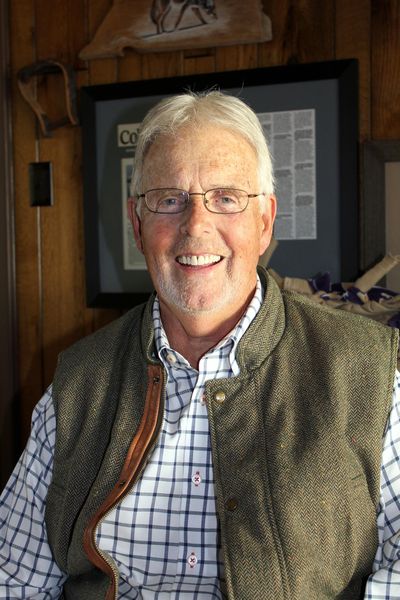Larry Cassidy makes fish, wildlife his business

It was a testament to Larry Cassidy Jr.’s massive legacy of public service to Northwest fish and wildlife that the large crowd applauded before he could even sit down to testify Jan. 23 at the Washington Fish and Wildlife Commission meeting in Vancouver.
“I hope you’re clapping when I’m done,” Cassidy, 76, quipped.
At a meeting where testimony was limited to three minutes, Cassidy, of Vancouver, was invited to speak as long as he wanted. It was a measure of respect by the commission to a man whose accomplishments include:
–President of the Northwest Steelheaders sport-fishing group and national vice president of Trout Unlimited.
–Two terms on the state Game Commission from 1973 to 1985. He was 33 when appointed. The next youngest member was 62.
–Ten years on the Northwest Power and Conservation Council, a major player in Columbia River fish and wildlife issues through its relationship with Bonneville Power Administration and access to ratepayer dollars.
–Five years on the John Day-Snake River Commission for establishing policy on leasing public lands by private ranchers; appointed by U.S. Interior Secretary Bruce Babbitt.
–Service on the Washington Salmon Funding Recovery Board, Pacific Salmon Commission and International North Pacific Anadromous Fish Commission.
–Chairmanship of the Pacific Ocean Shelf Tracking project, which is designed to develop and promote the application of acoustic tagging technology to study the life history of Pacific salmon and other marine life.
–Chairmanship of the Columbia River conference in 2014 regarding the water treaty between the U.S. and Canada.
In his remarks, Cassidy reminisced about his time on the commission, then turned to the topic of the day – Columbia River salmon management.
The key to salmon management is getting wild fish to the spawning grounds and selective harvest methods where hatchery salmon are taken and wild fish released are essential, he said, lauding the commission for the Columbia River reforms initiated in 2013.
Part of those reforms is the switch in the lower Columbia from gillnets to seines, which allow for live release.
Initial assumptions were only 5 percent or so of the wild fish released from seines die, but later research has found mortality rates ranging from 21 percent to 38 percent.
“I think your study is wrong,” Cassidy said. “I think you need a new one. I think you need to find out what the mortality is on seine fishing in the lower Columbia River.”
Noting that recreation fishing license fees represent the largest single portion of revenue for managing fisheries, he said, “I was in the plumbing business all the time I served in public service and I always took care of my biggest customers first.”
His remarks complete, the crowd of mostly sportsmen gave him another round of applause.